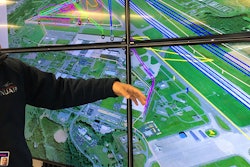
 David Dixon
David DixonToo often, the construction of food manufacturing facilities doesn't go smoothly. Teams lose precious weeks of their schedule at project outset, require painful “value engineering” efforts once costs come in or don’t meet the expectations of operations personnel, to name just a few common problems. Worst of all, facilities that get off track early on can end up with the highest cost of goods sold (COGS) in their production network.
There are ways to overcome the hurdles, however. It is possible to have a project that comes in on-time and at budget, has high overall equipment effectiveness (OEE), delivers customer service levels that beat the competition and more — all while resulting in lower COGS.
Difficulties during design and construction are often the result of having insufficient time to troubleshoot. Investing time and effort in a preconstruction planning process can keep things on course. Focusing on early stage strategy is critical, and the best organizations continually address their supply chain assets using audits and integrated teams. Companies that lack the internal engineering experience to manage their capital investments should work with strategic partners who can provide engineering and logistics analysis.
A structured preconstruction approach can define the project scope, schedule and cost, confirming the viability of capital investments and supporting the capital authorization process. One factor that is often a barrier to executing a preconstruction process is the funding mechanism. It is important to have a procedure in place to pay for preliminary engineering ahead of the capital project approval; engineering directors are leery of investing in preconstruction studies if they don’t have a budget to charge it to or if the capital project is not approved by the Board.
Preconstruction should include studying a range of supply chain options, as well as volume and stock keeping unit (SKU) mix scenarios. Team members should include representatives from engineering, operations, quality control, regulatory compliance, sales, finance (particularly product cost accounting) distribution/logistics, and possibly human resources and R&D.
Site selection and negotiations for incentives can take many months, so teams must guide real estate and consulting efforts and work in parallel on site comparisons, understanding how various costs or savings impact COGS. Furthermore, a balance must be found between pursuing savings and delaying the project.
Preconstruction Tools
New technologies are now available that enable exploration of more alternatives — with more accurate costing — during a project's conceptual design phase. What used to take four-to-seven weeks at a cost of $100,000-plus can now be accomplished in two-to-three weeks for $10,000. Cost modeling tools, 3D software, Google Earth and access to web databases have come together over the past year and are used by engineer-led design/build firms, which make a single firm responsible for the end-to-end construction process.
Consultants' processes can provide interactive building information modeling services, often with software that includes customized formulas and data sets (especially historical cost data) that are closely tailored to specific project situations. 3D models can be generated to fit multiple available sites, providing feedback regarding location, cost, layout, energy, cut and fill, and scheduling. Parameters can be changed on the fly and cost estimates on energy, lifecycle, topography/grading and scheduling/sequencing are then updated in real time. Decision-making is enhanced when owners and team members are engaged in the transformation of a model as its footprint, building material type, massing, siting and more are adjusted. Various alternatives and "what-if" scenarios can also be quickly and accurately compared. This process reduces the number of changes and unexpected costs that occur during build-out, as well as ensure the schedule. Potential risks are identified early so that mitigation tactics can be deployed.
Another tool that is useful during preconstruction is the Project Definition Rating Index (PDRI), a checklist made available by the Construction Industry Institute (CII). The PDRI is a weighted scoring system that evaluates all aspects of a capital project and is based on data from over 25,000 completed capital projects. By using the system, project teams and owners receive a thorough front-end assessment of their proposed project and identify where there are specific risks to succeed — especially from a design and cost standpoint.
Benefits of using the PDRI include:
- Capital is directed toward the areas that best meet the organization’s overall goals.
- More stakeholders are included in the front-end definition and planning process.
- Each step in the capital process is connected to and builds on the previous step.
- Long-term requirements are considered at the front-end of a project.
- “Gates,” or formalized reviews, occur throughout the process. Projects must meet criteria established at the beginning of the project in order to move forward.
Design Phase Best Practices
Moving into the design phase, teams need to avoid common mistakes such as failing to integrate the building design with process and operations priorities, or trying to squeeze too much out of capital cost without considering operations costs.
Facility designs should also be robust. Investing in extra floor area, building height, roof load and utility capacity do increase capital, but these items typically depreciate at 20-30 years and reap huge benefits on annual operating costs in energy, OEE, labor, food safety and flexibility in terms of reacting to market conditions. When a planning team focuses on product cost accounting and COGS, it is easier to justify greater capital investment.
It is important to implement a rapid project delivery method that accommodates running these processes in parallel. The construction industry has moved past such strategies as “freezing the process,” bidding with 100-percent complete design documents, getting and fully negotiating multiple bids, etc. Rather, success is to be achieved by using open-book design-build with a truly integrated firm. Efficiencies can be gained by phasing the construction, allowing for contingency spending, procuring on unit prices, splitting scopes among two or more contractors, and even — counterintuitively — doing time and materials work.
The biggest determinant of project success is having strong and attentive leadership to manage the people on the team. This is not easy, as team chemistry, motivation, fears, egos and other human factors get in the way. Strong leadership can keep all participants on task and keep performance levels high.
There are many pathways for designing, constructing and commissioning a new facility or expansion. But today, integrated preconstruction and project delivery deliver the best results. An organized, collaborative approach allows projects to move quickly through key phases, while minimizing costs not only during construction, but all the way through operations. The result is an efficient production line with competitive COGS.






















